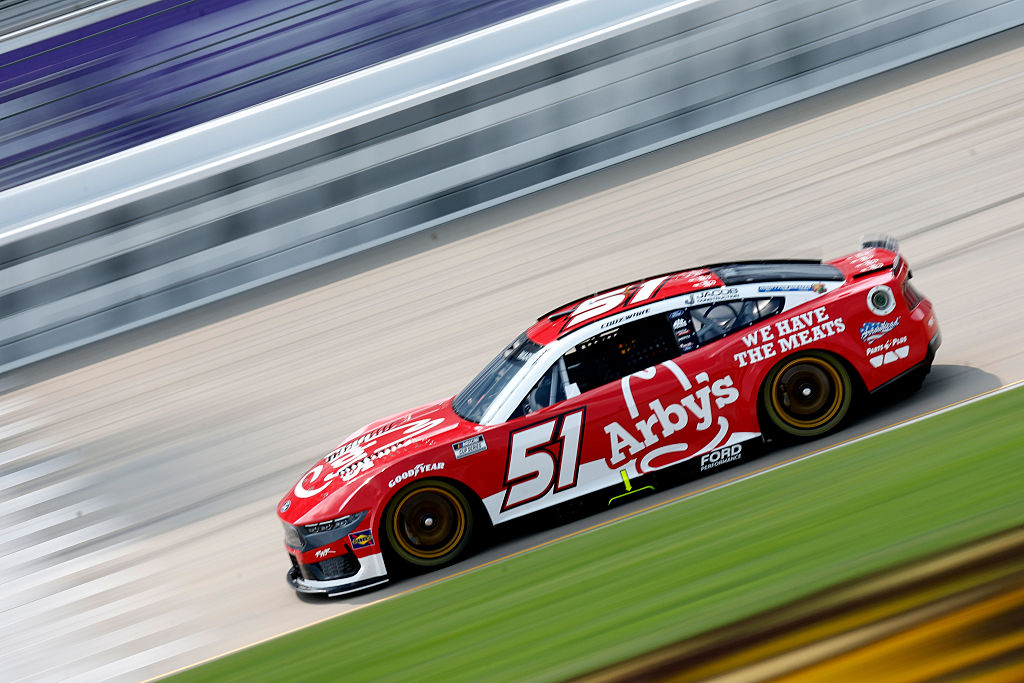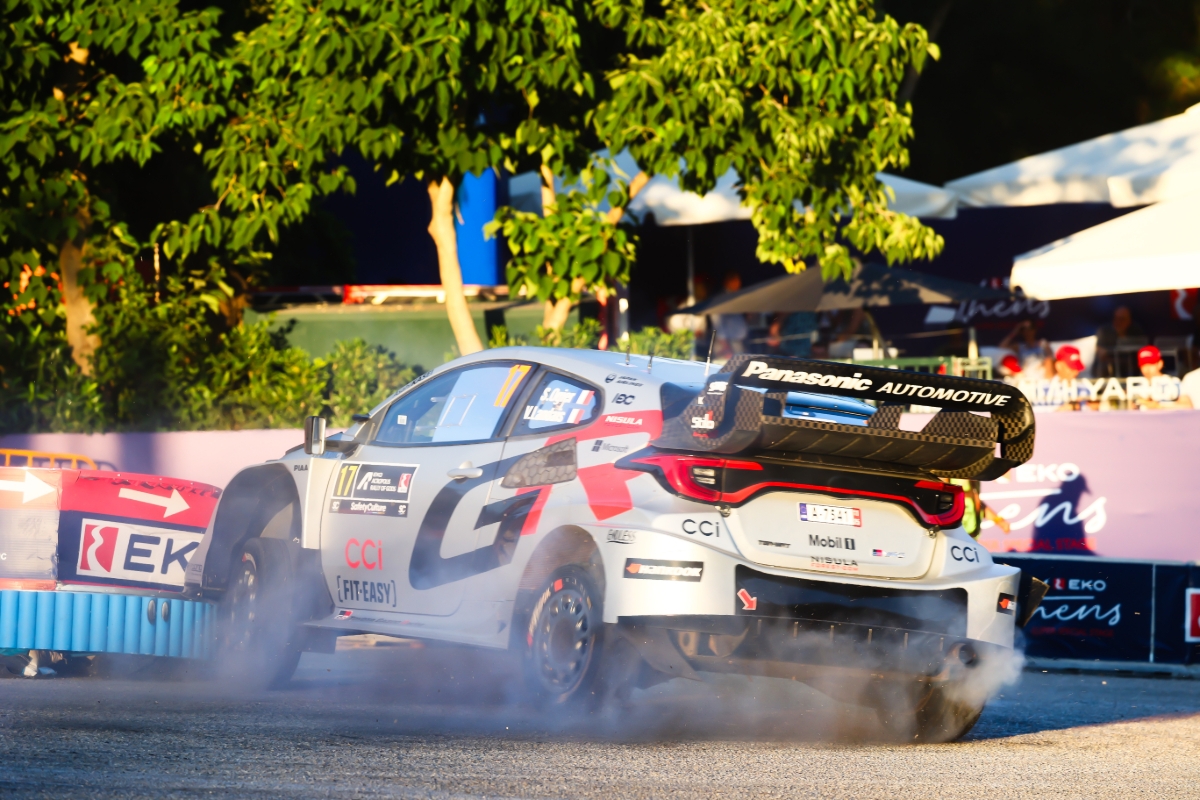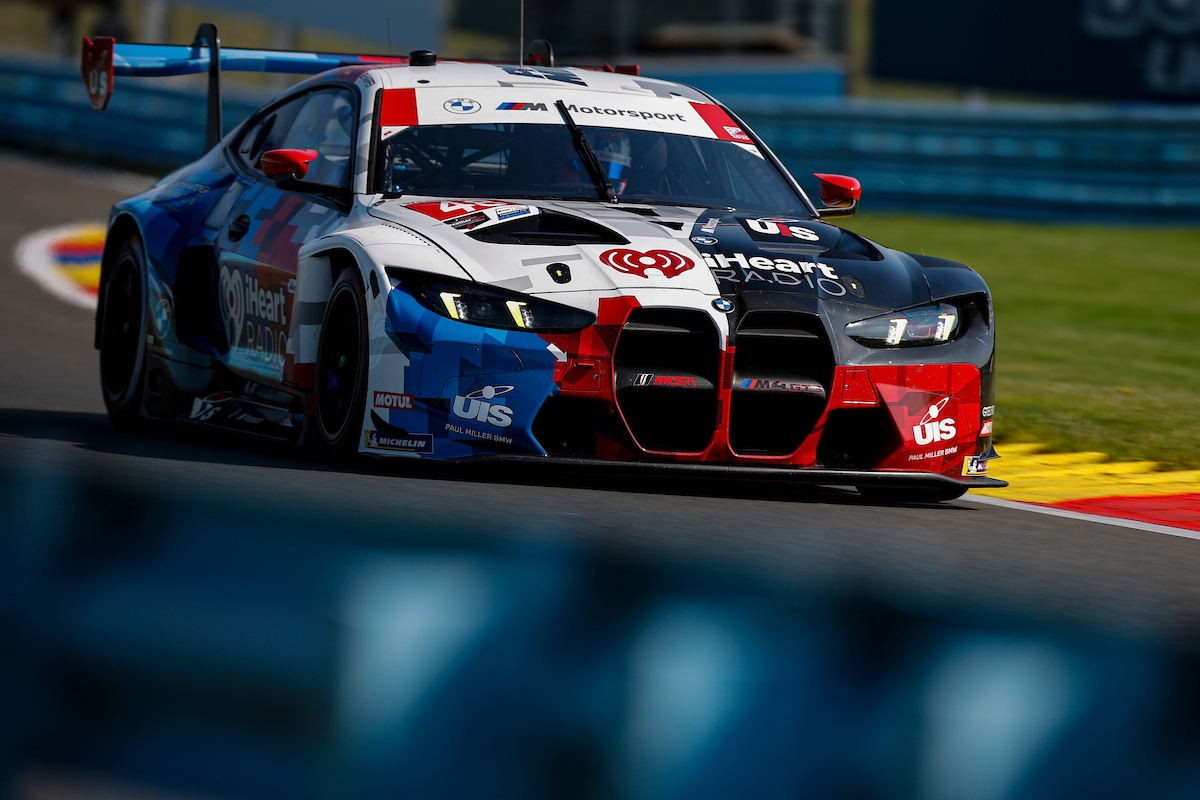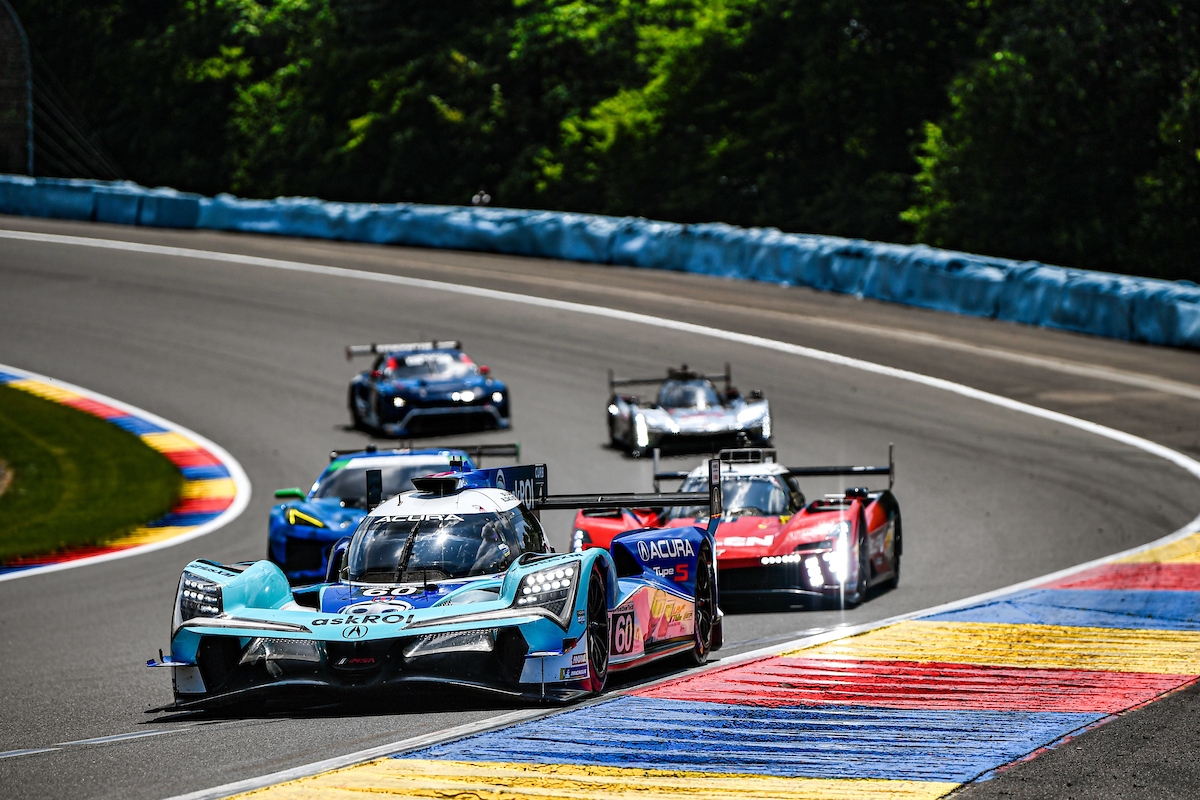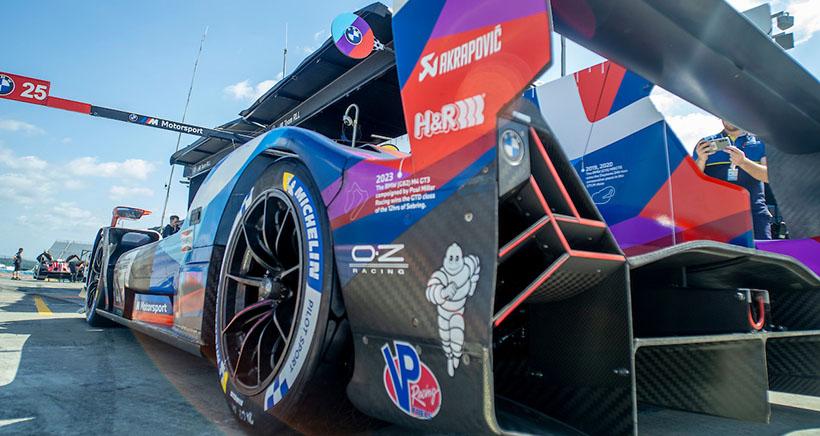
ShareThis is disabled until you accept Social Networking cookies.
Brutal heat a cool test for Michelin’s new GTP tire
If you happened to roll past Watkins Glen International the day after Colin Braun and Tom Blomqvist won the Sahlen’s Six Hours of The Glen, you’d have been surprised by the sight and sound of GTP class competitors from the IMSA WeatherTech SportsCar Championship still pounding around the classic 3.4-mile road course.
Five teams – Acura Meyer Shank Racing w/Curb Agajanian, Aston Martin THOR Team, BMW M Team RLL, Cadillac Whelen, and Porsche Penske Motorsport – were asked by IMSA tire supplier Michelin to stick around for an extra day to perform a final validation test on Michelin’s new 2026 "hard" tire before it enters production this autumn. Watkins Glen was chosen for the high stress and loads it places on tires, as well as the potential for severe weather conditions.
That’s what they got on Monday, when an Extreme Heat Warning was in place throughout the Finger Lakes region, with temperatures in the 90s F paired with high humidity. Ideal, in other words, for putting Michelin’s intended future hot weather tire to the ultimate test.
“We would call them perfect conditions,” said Hans Emmel, Michelin’s corporate racing manager for the WeatherTech Championship. “This is the so-called hard tire; it’s the hot weather tire, if you will. It’s a good validation test, the hotter it is on a very high energy track. Watkins Glen is amongst the highest-energy tracks we go to on the North American side. If we can combine very high temperatures with very high energy and have good performance, we know we’ve got something we can move forward with.”
More IMSA
“We try to cover the complete realm,” explained Michelin tire designer Florian Mora. “We will start with warm-up performance, and drivability during the warm-up. Then we have the peak performance part of the run, when the drivers explain the grip and the balance they have. Then you have the start of the degradation phase, where we are trying to learn if the new tire is more consistent. Finally, we have a performance analysis team that analyzes the data from the car to make recommendations.”
In addition to improving warm-up speed, Michelin’s goals for the new tire are to increase consistency and durability without sacrificing performance. When new, the ‘26 slick tire features a web-like "Vision" tread pattern that often wears off with the first few laps on track.
The unusual ‘Vision’ tread also creates a convenient talking point about Michelin’s tires.
“The Vision tread pattern is really meant to draw attention to what’s inside the tire, which is that 50 percent recyclable and renewable materials,” Emmel noted. “It’s very striking, and when you see it, it does draw you in. It makes you immediately want to touch the tire, almost. It reminds people of what we’re working towards with IMSA and motorsports to promote sustainable racing.
“If you come out with this new range of tire with all the fantastic things the development team have done, and it looks just like the current tire…we thought, ‘Let’s do something different that generates excitement within IMSA and sports car racing.’”
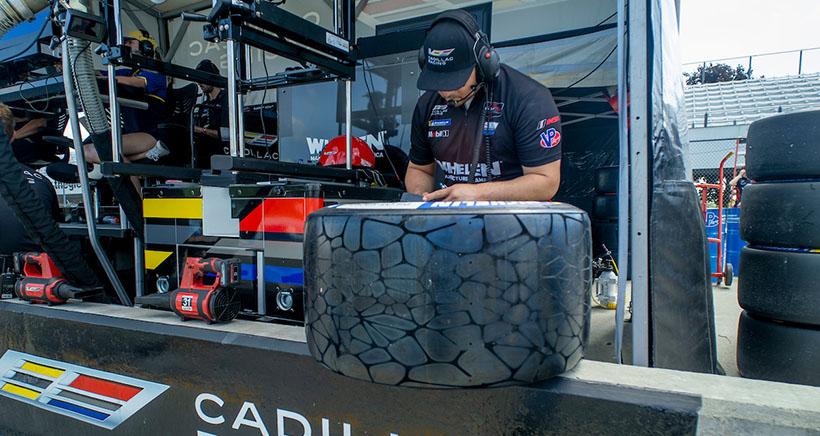
Feedback from drivers and team personnel at Watkins Glen on Monday was universally positive.
“I think the warmup is a little bit better,” observed Brandon Fry, lead engineer for Porsche Penske Motorsport’s No. 7 Porsche 963 entry shared by Nick Tandy and Felipe Nasr. “It came in pretty quickly on all the sets we’ve run. They’ve definitely moved in the right direction. I think this is the seventh loop we’ve done of this development tire (including PPM’s FIA World Endurance Championship team), and early on some of the options weren’t as favorable. But I think now they’re pretty close, and everybody is happy with what we will have for 2026.
“The nice thing about today is we just push 100 percent,” Fry added. “We’re not doing any lift and coast or trying to get durability out of the tires – we’re pushing the tires as hard as we can. It’s helping us understand the differences between the tires as well. This is the hardest case for our tires, so I think we’ll learn a lot. Maybe not so much today, but when we go away and do our analysis, we’ll be smarter and more prepared for next year.”
You’d think a day of tire testing on a viciously hot day would be monotonous drudgery for most drivers. But there’s no place Ross Gunn, driver of Aston Martin THOR Team’s No. 23 Aston Martin Valkyrie, would rather be.
“I love it,” he enthused. “For me, any day you can drive a Hypercar is a good day. To be here, the sun is shining, one of the best tracks in the world, getting eight sets of new tires – it’s not to be scoffed at, for sure! Also good to get more seat time for myself and Roman (De Angelis).
“A lot of the testing is blind,” Gunn continued. “It’s difficult to know exactly what each option is doing. But that’s kind of the key – the blind testing is really important, because you get ultimate honesty and focus on what each specific tire is doing. Doing a test the day after a race is beneficial to everybody, because you can make direct back-to-back comparisons.
“We tried multiple options of tires and they all seem to be reacting pretty well to warm-up and durability – and peak performance as well. I think Michelin has done a good job developing these tires.”
ShareThis is disabled until you accept Social Networking cookies.
John Oreovicz, IMSA Wire Service
Read John Oreovicz, IMSA Wire Service's articles
Latest News
Comments
Disqus is disabled until you accept Social Networking cookies.
